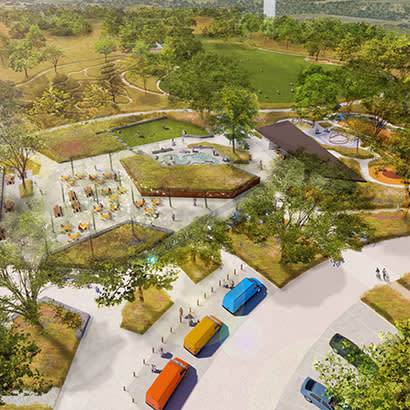
For an enhanced digital experience, read this story in the ezine.
Since the early 2000s, Frisco, Texas, has been one of the fastest-growing cities in the United States. As the city’s explosive growth continues, plains and pastures are replaced with development. Few tracts of undeveloped land remain within the city, and fewer still hold remnants of the vast grasslands that once supported a colorful array of wildlife. However, the city recognized the ecological value of its 120 acres at Northwest Community Park when planning the space. Historically, the park was a prairie ecosystem, as was much of the middle-United States ranging from the Gulf Coast to Canada, of which less than approximately 1 percent remains. During the site assessment in 2021, remnants of old-growth Blackland Prairie were identified along with historic Blackland Prairie soils that remained in part of an agricultural field. These discoveries led to the goal of increasing ecosystem function while also increasing human experiences in nature. The team set out to combine programming and conservation features to create a playful local park space that responds to the needs of our time.
Resilient Landscaping
The prairie supports several needs in urban environments, such as capturing and cleaning stormwater, improving air quality by sequestering carbon, providing pollinator habitat, and reducing heat-island effect. The design of Northwest Community Park supports these functions while interweaving mountain biking trails, hiking trails, playgrounds, a dog park and gathering spaces. The ecological goal of the design project is to protect the function of the northern remnant prairie while enhancing and increasing the bike and hiking experience. In the southern portion of the site, where most of the programming will take place, the prairie will be restored around these features, which will increase ecosystem function and opportunities for recreation simultaneously.
The park will showcase Blackland Prairie, savanna, woodlands, wetlands and riparian habitats. Blackland Collaborative, a consulting group focused on ecology, worked with a design studio to develop a diverse tallgrass prairie seed mix of multiple grass species as well as forbs. Local seeds and plants from the remnant prairie also will be incorporated to increase the genetic diversity of the mix and help ensure long-term sustainability of prairie establishment and development. Savanna habitat consisting of a diverse set of Indigenous trees and an Indigenous grassland ground cover will be established along the edges of the site to help provide a vegetative buffer to protect against pressure from introduced species outside of the project boundaries, as well as provide shade for the shared-use path.
Expanding Education
The design team created beautiful program spaces where Indigenous plants will be used in more formal applications to highlight the long-established plant communities and increase the ecological function in all aspects of the park. Using long-established plants in formal applications will normalize Indigenous species and inspire the community to use these plants in their landscapes.
From an interpretive perspective, the story of Northwest Community Park is about preserving a critical part of nature in a rapidly developing city while encouraging people to experience, learn from and enjoy the park.
Shannon Coates, Ph.D., MBA, CPRE, is Director of Parks and Recreation at City of Frisco, Texas. Emily Manderson is Principal and Senior Environmental Designer at Blackland Collaborative Inc.

